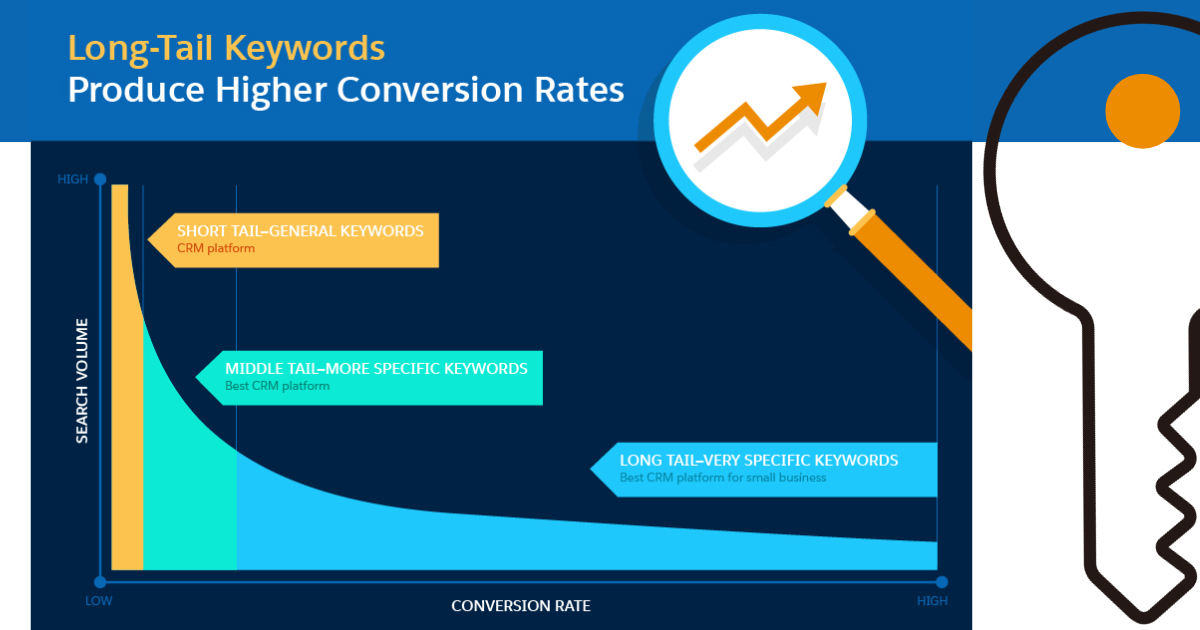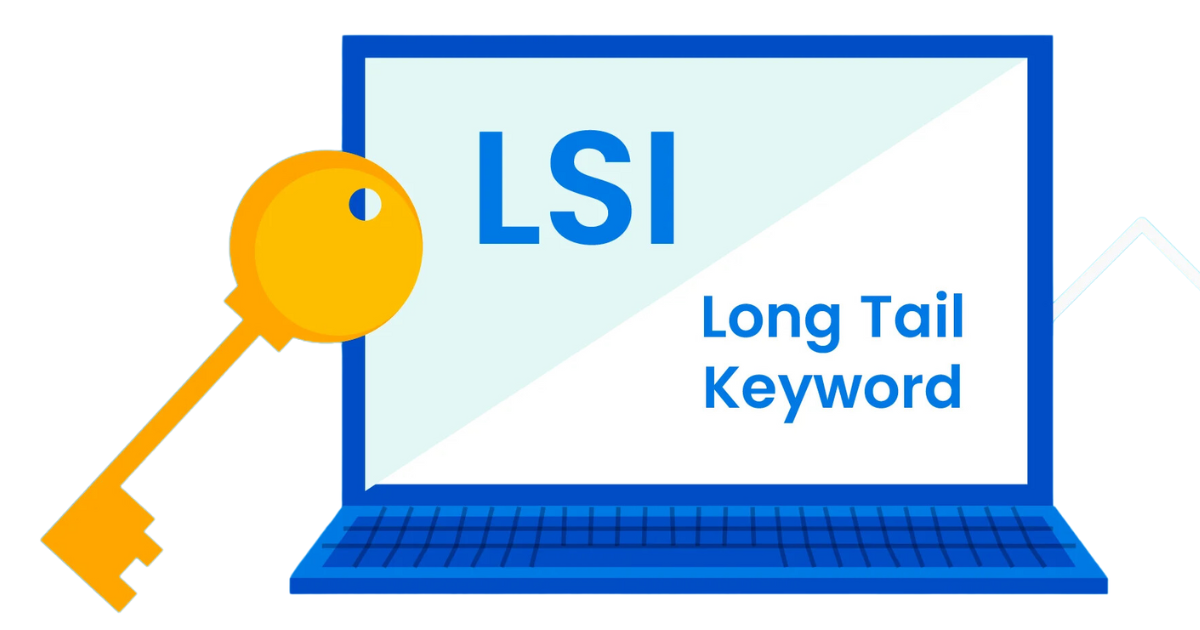These well-selected phrases are the key to increasing visibility and relevancy. The basic idea of keywords will be covered in detail in this section, along with their definition and the vital function they play in determining the success of digital material. Anyone looking to improve their internet presence must comprehend these fundamentals as we work through the complexities of keyword research. Come along for the ride as we explore the world of keywords, where the proper words may have a profound impact.
What is a keyword?
A keyword acts as a lighthouse to help visitors navigate the massive amount of stuff available online. A keyword is fundamentally a particular word or phrase that captures the essence of a subject. It serves as a language link between users’ searches and content producers’ attempts to deliver pertinent results. The foundation of search engine interactions are keywords, which allow user queries to be seamlessly connected to the material that most effectively meets their demands.
Types of Keywords
Short-Tail Keywords
Short-tail keywords are usually one to three words long and are concise. These are wide, broad phrases that convey the spirit of a subject. Examples are “digital cameras,” “shoes,” and “travel destinations.” Although there is a lot of competition for these keywords, it might be difficult to rank highly in search engine results, even if they frequently create huge search volumes.
Characteristics of Short-Tail Keywords
Shortness of speech: One to three words make up short-tail keywords, which are focused and succinct.
Generally speaking: These are broad keywords that cover a lot of ground within a specific industry or niche.
High Volume of Searches: High search volume for short-tail keywords frequently indicates their popularity with consumers. Competitive Atmosphere Short-tail keywords are quite competitive in search engine rankings because of their wide appeal.
Insufficient Clarity: Longer, more comprehensive queries yield more particular information than short-tail keywords do.
User Intent in General: When using short-tail keywords, searchers usually intend to do general or exploratory research.
Flexibility: Websites aiming for short-tail keywords might have to produce flexible content in order to serve a wide range of users.
Restricted Situation: Short-tail keywords can have less context due to their brevity; therefore, search engines must infer human meaning.
Frequently Used in Paid Promotions: Because short-tail keywords can have high visibility, they are often employed in paid advertising campaigns.
Commonly Acknowledged Examples: Keywords like “travel,” “technology,” “health,” and “fashion” are examples of short-tail keywords.
Long-Tail Keywords
Long-tail keywords are longer, more focused phrases that typically have three or more words in them. These keywords provide a more thorough context and are aimed at a specific audience. For instance, “best running shoes for flat feet” and “affordable digital cameras for low-light photography” Long-tail keywords tend to get better quality and focused traffic, despite maybe having a lower search volume.
Specificity: Long-tail keywords have a great deal of detail and specificity. By focusing on a certain area or facet of a larger subject, they offer a more accurate representation of the user’s intention.
Reduced Search Volume: Generally speaking, long-tail keywords receive fewer searches than short-tail keywords. However, because they draw people who have more defined and focused goals, they frequently have higher conversion rates.
Clarity of Intent: People who use long-tail keywords typically have more defined intentions. When comparing the buying process, someone looking for the “best running shoes for flat feet” is probably farther along than someone looking for just “running shoes.”
Less Competition: Long-tail keywords typically face less competition because of their specificity. As a result, websites may find it simpler to appear higher for these terms in search engine results pages (SERPs).
Content Alignment: Using long-tail keywords will help you create content that is exactly what the user wants to see. Higher engagement and an improved user experience may result from this.
Enhanced Relevance: Long-tail keywords tend to generate more relevant traffic due to their increased specificity. Long-tail searchers are more likely to find precisely what they’re looking for when they access your material.
Targeted Audience: You can connect with a more specific audience by using long-tail keywords. The people who do use these particular phrases are more likely to be interested in your content or items, even though the volume of searches overall may be fewer.
SEO potential: By enabling websites to produce material that specifically answers the queries or worries of a particular audience, long-tail keywords offer potential for SEO improvement.
Voice Search Optimization: Long-tail keywords are becoming even more important as voice search and speech-activated devices grow more common. When utilizing voice search, people typically speak in casual, conversational language, which fits with the long-tail keywords’ specificity.
simpler to rank for: Compared to more generic terms, long-tail keywords are frequently simpler to rank for in search engines due to their better relevance and lesser competition.
LSI Keywords
LSI keywords are words that have a semantic context in common with the primary keyword. To comprehend the connections between words and concepts in text, search engines use latent semantic indexing (LSI). Search engine rankings can be raised and content relevance increased by incorporating LSI keywords. If the primary keyword is “healthy recipes,” for example, the LSI keywords can be “nutritious meal ideas” or “balanced diet plans.”
Semantic Relevance: The core keyword or topic and LSI keywords have semantic relationships. They aid search engines in comprehending the context and connections between various terms in a piece of information.
Natural Language Use: Natural language usage is frequently reflected in LSI keywords. These are terms or expressions that people frequently use when talking about a specific subject, which helps the audience grasp the information as a whole.
Material Enrichment: Using long-tail keywords (LSIs) in the material gives it a deeper meaning and a more all-encompassing perspective. The content’s richness and quality may both benefit from this.
Decreased Keyword Stuffing: By enabling a more organic and varied use of language in content, LSI keywords help to lessen the necessity for keyword stuffing. Content that is easy to read and offers users value is highly valued by search engines.
Enhanced Search Engine Ranking: A webpage is more likely to be regarded as relevant by search engines when it contains LSI keywords. This can raise the content’s visibility and have a favorable effect on search engine results.
Improved User Experience: Long-tail semantic keywords (LSIs) make information more logical and educational, which improves the user experience. Content that is abundant in pertinent terms increases the likelihood that visitors will locate what they’re looking for.
Topic Clusters: The development of topic clusters frequently makes use of LSI keywords. This entails structuring material around a central idea and building a network of linked, contextually relevant articles or pages utilizing associated long-tail keywords.
Contextual Understanding: Lexical Semantic Indexing (LSI) aids search engines in deciphering the meaning and context of words. If the primary keyword is “apple,” for instance, LSI keywords like “fruit,” “orchard,” or “nutrition” can assist in differentiating between the topic of the article and that of the technology firm.
Variety of Vocabulary: LSI keywords promote the usage of a wide range of terms that are connected to the primary subject. This is necessary to appeal to a wider range of users and accommodate different ways in which users may phrase their search queries.
Content Adaptability to Algorithm Changes: As search engine algorithms get more complex, LSI keywords aid in keeping content flexible. They are consistent with how search engine algorithms are developing, which aims to make content understandable in a more human-like manner.

For those who create digital material, keyword research acts as a compass in the vast online space. The advantages are numerous and essential to succeeding online. First off, it improves visibility by making the material more likely to show up prominently in search engine results by matching it to the exact terms users are searching for. Second, it makes it possible to comprehend audience intent more deeply and produce content that specifically caters to user preferences and wants. In addition, keyword research helps with strategic decision-making by revealing patterns, pointing out market gaps, and offering information on rival tactics. It is the cornerstone of successful SEO, increasing click-through rates, generating organic traffic, and eventually boosting the success of all digital projects. Essentially, keyword research is a strategic asset that enables content authors to traverse the competitive digital terrain with relevance and accuracy. It is not just a tool.
Conducting Keyword Research: A Step-by-Step Guide
Understanding Your Target Audience
An essential component of Internet marketing and search engine optimization (SEO) is keyword research. Selecting and focusing on the appropriate keywords increases a website’s exposure in search engine results, bringing in relevant visitors and possible buyers. There are various groups into which the target audience for keyword research can be broadly classified:
Internet marketers
SEO Specialists: Search engine optimization specialists are in charge of making websites more search engine-friendly. To find high-traffic, pertinent keywords to use in the website’s content and meta tags, they do keyword research.
Content marketers: Experts who develop content strategies study keywords to learn the vocabulary and expressions of their target audience. This aids in producing material that appeals to readers and is likely to be found via search engines.
PPC Advertisers: To develop focused ad campaigns, pay-per-click advertisers use keyword research. To make sure their advertising is seen by the correct people, they find keywords that have high search traffic and are relevant.
Owners and managers of websites
Business Owners: To find out what keywords prospective clients use to look for goods or services similar to theirs, entrepreneurs and business owners conduct keyword research. Their online presence is enhanced, and their website content is optimized with the help of this information.
Website managers: People in charge of updating and managing websites make use of keyword research to make sure the content of the site is in line with the language and trends that the intended audience is using.
Content Producers
Bloggers: To find subjects that fit their niche and are in demand, bloggers conduct keyword research. This guarantees that their material has the ability to rank highly in search engine results, in addition to being engaging for readers.
Copywriters: Experts who write informational or promotional content do keyword research to find terms that would appeal to their target audience and increase the piece’s online visibility.
Market investigators
Market analysts: To better understand customer behavior, tastes, and upcoming trends, professionals performing market research can gain valuable insights from keyword research. Data on keywords reveals what consumers are looking for when it comes to particular goods or services.
Competitive Analysts: To determine the terms and phrases that rivals are focusing on, analysts of competitors in the online sphere conduct keyword research. Using this information will aid in the development of strategies to maintain market competitiveness.
Designers of UX/UI
Designers of User Experience (UX): In order to create user-friendly interfaces, it is imperative to comprehend the language and terminology used by the intended audience. Researching keywords enables UX designers to make sure that the navigation and structure of the website match user expectations.
Experts in e-commerce
E-commerce Managers: Experts in overseeing online businesses employ keyword analysis to enhance product listings and guarantee that their goods are found by prospective buyers looking for related products.
Digital Merchandisers: Those in charge of promoting things online conduct keyword research to improve the e-commerce platform’s discoverability of particular products.
The broad spectrum of experts working in digital marketing, website management, content production, market research, and e-commerce make up the target audience for keyword research. Effective keyword research and a strong online presence depend on an understanding of the language and search habits of the target audience.
Tools for Keyword Research
Google Keyword Planner
Provider: Ads on Google
Overview: One free tool in the Google Ads suite is Google Keyword Planner. Although it is primarily utilized for SEO, it is intended for advertising. It gives consumers information on search volume, suggests terms, and explains how competitive certain keywords are.
Semrush
Provider: Semrush
Overview: Semrush is a comprehensive marketing toolset that comes with a potent tool for keyword research. Features including competitor analysis, organic search reporting, and keyword difficulty analysis are available. For thorough SEO and digital marketing tactics, Semrush is commonly employed.
Ahrefs
Provider: Ahrefs
Overview: One of the most well-known SEO toolkits is Ahrefs, which has a strong keyword research tool. It offers information on click-through rates, search traffic, and keyword difficulty. Ahrefs is useful for competitor analysis and is renowned for having a large backlink database.
Moz Keyword Research Tool
Provider: Moz
Overview: The Moz Pro package includes Moz’s Keyword Explorer. It offers comprehensive keyword recommendations, difficulty ratings, and the option to rank keywords according to a range of parameters. In addition, Moz is well-known for various SEO tools and its domain authority meter.
UberSuggest
Provider: Neil Patel
Overview: Ubersuggest is a user-friendly, free tool for researching keywords. It offers data on search volume, keyword ideas, and competitiveness analysis. Ubersuggest also provides backlink information and content ideas.
Tool for Keywords.io
Provider: KeyWords.io
Overview: This tool, KeywordTool.io, pulls up term ideas from YouTube, Bing, Google, and other search engines. It gives users information on search volume and assists them in finding long-tail keywords. Basic features are available in the free version, while more sophisticated capabilities are available in the paid version.
SpyFu
Provider: SpyFu
Overview: SpyFu lets users see the terms their rivals are focusing on and is mostly concerned with competitor analysis. It offers past information on the keywords, ad history, and organic search rankings of a domain. SpyFu is helpful for learning about rivals’ tactics.
Pro Long Tail
Provider: Long-Tail Professional
Overview: The goal of Long Tail Pro is to assist customers in locating highly targeted long-tail keywords, which are frequently less competitive. In addition to competition measures and keyword ranking tracking over time, it also offers keyword suggestions.
SERPstatus
Provider: SERPstat
Overview: With a thorough keyword research tool built-in, SERPstat is an all-in-one SEO platform. It offers information on competitor analysis, keyword difficulty, and search traffic. Features for backlink analysis and site audits are also provided by SERPstat.
RespondToThePublic
Provider: AnswerThePublic
Overview: Answer The public stands out because it displays keyword data as potential pieces of content. Based on a seed phrase, it generates questions, prepositions, and related keywords to help users understand the kinds of queries they are posing.
It’s crucial to take into account aspects like the user interface, data accuracy, update frequency, and the particular capabilities that support your SEO and marketing objectives when choosing a keyword research tool. Before deciding to subscribe, customers can test out the functionality of many of these products with free trials or basic versions.
Brainstorming and Generating Keyword Ideas
Important phases in the keyword research process include brainstorming and concept generation. Choosing your keywords wisely will guarantee that your material is relevant to the queries of your intended audience. This is a comprehensive tutorial on brainstorming and coming up with keyword ideas.
Recognize Your Audience First
- Determine who your target market is and develop thorough buyer personas.
- Take into account their linguistic preferences, challenges, hobbies, and demographics.
Do some niche research
- Examine your sector or specialty to learn about prevalent themes and patterns.
- Examine rivals’ websites to find out the keywords they are focusing on.
Employ starting keywords
- Start by selecting seed keywords that are closely associated with your company or content.
- These are general terms that sum up the main subjects of your website.
Use long-tail keywords to expand
- By adding modifiers (such as location, size, color, etc.) to your seed keywords, you can create long-tail keywords.
- Long-tail keywords can draw extremely focused traffic because they are frequently more specific.
Make use of tools for keyword research
- Make use of resources like Ahrefs, Semrush, and Google Keyword Planner, among others.
- To obtain more suggestions, search volume information, and a competitive analysis, enter seed keywords.
Examine similar search terms
- Examine the “People Also Ask” area shown in the search results on Google.
- These inquiries can give rise to creative content ideas and reveal information about user intent.
Review Autocomplete Recommendations
- Enter your starting terms into Google to receive autocomplete recommendations.
- These recommendations, which derive from actual user inquiries, may provide ideas for new keywords.
Review content from competitors
- Examine rival websites to see which keywords they are focusing on.
- For information, examine their product pages, blog entries, and meta tags.
Examine Communities and Industry Forums
- Examine discussion boards, forums, and industry-specific social media communities.
- Take note of the terminology and vocabulary employed by community members.
Make an audience question
- To find out about the interests and problems of your audience, use surveys, direct questions, and social media polls.
- Your keyword strategy should take their language into consideration.
Examine seasonal patterns
- Consider the seasonal changes in your business.
- Determine which keywords are most likely to become popular during particular periods of the year.
Assess Analytics Information
- Examine the statistics on your website to see how people are currently finding it.
- Find the most effective keywords, then think about writing more about them.
Consider the user’s intent
- Think about the purpose of user searches (navigation, transactional, or informative).
- Create keywords that correspond with the probable intent of the user.
Employ groups of thematic keywords
- Organize related keywords into clusters based on a theme.
- This can enhance both the user experience and the overall SEO of your website.
Keep up-to-date
- Review and adjust your keyword approach on a regular basis in light of shifting user behavior and industry trends.
- It’s possible for new keywords to appear and for old ones to lose prominence.
Test and Experiment
- Try experimenting with different keyword variations without fear.
- Evaluate the effectiveness of various keywords and adjust your approach accordingly.
Take local keywords into account
- If your company operates locally, include keywords that are relevant to your area.
- This is particularly crucial for companies that cater to a particular region.
Apply mind mapping
- To graphically arrange and connect relevant keywords, make a mind map.
- This can assist you in understanding the connections between various subjects.
Work Together with Your Group
- Include the other members of your team in the ideation process.
- A list of keywords that is more complete can result from several viewpoints.
Set priorities and improve
- Prioritize your list of possible keywords according to their relevancy, search volume, and level of competition.
- Sort and select the keywords that will have the most influence on your objectives.
Analyzing Keyword Metrics
Search Volume
Definition: The typical quantity of times a keyword is looked up within a specific period of time.
Evaluation: Although a large search volume may indicate greater competition, it also implies popularity. A low volume of searches can point to a specialized subject or lower user interest.
Difficulty of Keywords (KD)
Definition: A measure of the difficulty of ranking for a specific keyword.
Evaluation: Strong competition is implied by high KD, which makes it difficult to rank rapidly. Easy-ranking prospects are indicated by low KD, especially for recently established or less authoritative websites.
CTR, or click-through rate
Definition: The proportion of clicks received by a search result that is determined by the quantity of impressions.
Evaluation: A higher CTR suggests that the keyword is both user-friendly and relevant. A low CTR could indicate that the user’s goal is not well aligned with the search result.
Click-Per-Cost (CPC)
Definition: The typical price that marketers in sponsored advertising campaigns spend for a click.
Evaluation: A significant CPC could be a sign of significant commercial intent as well as a lucrative term for marketers. Less competition among marketers could be a sign of a low CPC, but it could also suggest a lower commercial value.
Long-Term Search Terms
Definition: keyword phrases that are longer, more precise, and typically have fewer searches.
Evaluation: Long-tail keywords are useful for targeting certain niches since they frequently face less competition. Higher conversion rates can result from their ability to record more precise user intent.
SERP Elements
Definition: Featured snippets, information panels, and local packs are examples of special search result features.
Evaluation: Determine which SERP elements show up for the desired keyword. To improve visibility, think about optimizing content for these features.
Time of Year
Definition: The year-over-year variation in the volume of searches for a certain keyword.
Evaluation: Determine whether seasonal tendencies apply to the keyword. Consider peak seasons while creating content and marketing efforts.
User Intention
Definition: the purpose of a user’s search query, which can be divided into three categories: transactional, navigational, and informational.
Evaluation: To deliver pertinent information, make sure your material is in line with the user’s intent. Optimize with the right goal in mind to improve the user experience.
Location-Based Targeting
Definition: Taking into account a keyword’s location-specificity, pertinent to nearby companies
Evaluation: If your company caters to a certain region, include keywords related to that area. If appropriate, optimize material for local search.
Desktop vs. Mobile Searches
Definition: distinguishing between desktop and mobile search queries.
Evaluation: Think about how users interact with various gadgets. If a sizable segment of your audience uses mobile devices, optimize for them.
Keywords with and without brands
Definition: Differentiating between keywords that contain and don’t contain your brand name
Evaluation: Track both brand and non-brand keywords to evaluate the visibility of your brand. Non-brand keywords could suggest the possibility of expanding your audience.
Metrics for User Engagement
Definition: page views per session, time on page, and bounce rate metrics.
Evaluation: Analyze how well the user’s purpose is met by your content. High engagement metrics point to the quality and relevancy of the content.
Trend Evaluation
Definition: analyzing past data to spot trends in the popularity of certain keywords.
Evaluation: Arrange material according to popular subjects to take advantage of users’ present interests. Keep an eye out for shifts in the popularity of your keywords.
Analysis of Competitors
Definition: Assessing the keywords that rivals are focusing on.
Evaluation: Find areas where your plan is lacking and chances to beat the competition. Recognize the crucial phrases that make them successful.
Potential for Conversion
Definition: determining how likely a keyword is to result in conversions or the required actions.
Evaluation: Think about how the keyword, user intent, and your conversion objectives line up. For focused optimization, give priority to terms that have a better possibility of conversion.
Relevance of Content
Meaning: Make sure the information in your content is relevant to the term and helps readers.
Evaluation: Assess how effectively the material you currently have satisfies user expectations for the chosen term. To improve content’s relevance and usefulness, optimize or generate it.
Comments and Feedback from Users
Definition: Examining feedback, reviews, and comments pertaining to your material.
Evaluation: Recognize user sentiment and pinpoint areas in need of development. Utilize input to improve and streamline your content strategy.
Long-Tail Keyword Strategies
Successful long-tail keyword strategy implementation is essential for efficient SEO and content marketing. Because of their specificity and tendency to contain three or more words, long-tail keywords have special benefits when it comes to increasing conversion rates and bringing in focused traffic. It is crucial to use keyword research tools like Google Keyword Planner, Semrush, and Ahrefs in addition to looking at autocomplete suggestions and similar queries in order to find these keywords. Analyzing competitors can reveal gaps in the coverage of material, giving rise to chances to thoroughly cover specialist subjects. Understanding user intent is necessary when creating content around long-tail keywords since it enables more accurate alignment with audience needs.
Additionally, adding these keywords organically to headings, titles, and meta descriptions informs search engines about the content’s relevancy. Creating FAQ pages, promoting user-generated information, and posting blog entries on a regular basis are good ways to answer certain questions. The strategy’s adaptability is increased via voice search optimization, mobile-friendly term consideration, and keyword localization for SEO. A thorough long-tail keyword strategy’s long-term success is mostly dependent on factors like diversity in anchor text in link-building efforts, keeping an eye on performance through analytics, and catering to industry developments. In addition to increasing search engine visibility, this strategy builds authority in particular markets and offers insightful content to a more focused and involved audience.
Long-Tail Keyword Advantages
Recognize the advantages of using long-tail keywords in your approach. Because of their specificity, long-tail keywords frequently yield greater conversion rates, even though they may get fewer search volumes. Acknowledge the special benefits they provide in terms of addressing a more specialized audience.
Local Keyword Research
Performing efficient local keyword research is essential for companies looking to improve their internet presence in particular regions. Local keywords, which frequently include location modifiers, assist companies in connecting with potential customers looking for goods or services nearby. It is crucial to comprehend the precise terms that consumers in the target location might use when searching before beginning local keyword research. Finding these keywords is made easier by using resources such as Google Keyword Planner and by adding local variations to search searches.
Furthermore, examining regional company listings, client testimonials, and social media platforms can offer valuable perspectives on the vocabulary and expressions frequently employed by the community. Producing material that caters to regional requirements, including blog entries and landing pages tailored to a particular area, enhances search engine rankings for regional queries. Local SEO initiatives are aided by the use of schema markup, Google My Business profile optimization, and the acquisition of local backlinks. For local search results to be successful, business information such as name, address, and phone number (NAP) must be consistent across internet platforms. Persistently observing the success of local keywords and modifying tactics in response to modifications in user behavior or business offerings guarantees continued relevance and visibility in the local market.
Advanced Keyword Research Techniques for Deeper Insights
- Use the Google Search Console to locate hidden treasures. With its wealth of keyword data, Google Search Console provides insightful information about the search phrases that bring visitors to your website. You may see which keywords are producing impressions but no clicks by examining the “Search Analytics” report. This suggests that your content might not be adequately addressing the purpose of the user. You have the opportunity to enhance conversion rates and your content strategy by taking advantage of these unexplored options.
- Look for inspiration for keywords in competitor landscapes. Analyzing competitors is a great way to find hidden gem keywords. It’s possible to find opportunities to target terms that fit the needs of your audience but may have escaped your notice by looking at the keywords your competitors rank for. Analyze competitor keyword rankings using tools such as Ahrefs and Semrush to find any weaknesses in your own approach.
- Use semantic analysis to interpret the intent of users. Finding popular search phrases is only one aspect of keyword research. By examining the underlying meaning of search queries, semantic analysis reveals the purpose and expectations of the user. You can produce content that actually resonates with your audience and meets their individual needs by using tools like Serpstat and Textalytics to help you identify the underlying context of search phrases.
- Adopt long-tail keywords to drive focused traffic. Long-tail keywords, with their increased specificity, often result in more qualified visitors and higher conversion rates, whereas high-volume keywords draw in a wider audience. To draw in customers who are actively looking for what you have to offer, focus on long-tail keywords that accurately represent the demands of your target market. Finding pertinent long-tail keywords is made easier with the help of programs like Google Keyword Planner and Long Tail Pro.
- Keep an eye on keyword trends and adjust as necessary. The world of search is always changing, with new trends appearing and disappearing over time. Keep an eye on industry developments and the success of your selected keywords on a regular basis to stay ahead of the curve. Utilize resources like Google Trends and Keyword Surfer to pinpoint emerging search phrases and modify your approach accordingly, guaranteeing your content stays current and draws in relevant traffic.
- Get user-generated keyword insights with Google Analytics. Google Analytics gives you useful information about the search phrases people type into your website. These user-generated keywords can find possibilities to optimize your content and enhance the user experience by revealing hidden search intent. You can find these hidden treasures and include them in your keyword strategy by examining the “Site Search” report in Google Analytics.
- Look for ideas for keywords on forums and Q&A sites. You can obtain a lot of keyword insights directly from your target audience by participating in forums like Reddit and Quora. Participate in industry dialogues, respond to user inquiries, and examine the language they use to find pertinent and often-used terms. These platforms offer a distinctive viewpoint on user intent and might assist you in locating long-tail keywords that are popular with your target market.
- Use structured keyword targeting with topic clusters. By grouping keywords according to recurring themes, topic clusters provide a logical and methodical approach to keyword targeting. You can generate comprehensive content that addresses the whole range of user intent for a given topic by clustering related terms. By enhancing your website’s relevance and authority, this tactic raises its search engine rankings and draws in relevant traffic.
Conclusion
It is the cornerstone of audience interaction, intelligent content development, and an effective internet presence. Content producers may effectively traverse the ever-changing search engine landscape and ensure that their information effectively reaches their intended audience by comprehending and carefully utilizing keywords. Keyword research is a dynamic instrument that strengthens digital strategy, increases competitiveness, and ultimately helps online initiatives succeed.
Are there free tools available for keyword research?
Yes, there are several free tools for keyword research. Google Keyword Planner is a popular choice, providing insights into search volume and competition. Other options include Ubersuggest and AnswerThePublic for generating keyword ideas.
What role do user intent and context play in keyword research?
Understanding user intent is crucial for selecting the right keywords. Consider why users are searching for specific terms and tailor your content to match their intent. Additionally, consider the context of the keywords to ensure your content aligns with the user’s needs and expectations.
Can I rely solely on keyword research for SEO success?
While keyword research is a vital component of SEO, it’s not the only factor. Quality content, a well-structured website, and other SEO best practices also contribute to overall success. Balancing keyword optimization with a user-focused approach is key to achieving sustainable SEO results.














Hey there, You have done an excellent job.
I will certainly digg it and personally recommend to my friends.
I am confident they’ll be benefited from this web site.
Thank you for another fantastic post. The place else may anybody get
that type of info in such a perfect method of writing?
I have a presentation next week, and I am at the search for such information.
Nice post. I learn something totally new and challenging on websites
Thank you so much
you are in reality a just right webmaster The site loading velocity is incredible It seems that you are doing any unique trick In addition The contents are masterwork you have performed a wonderful task on this topic
Thank you so much
Very well presented. Every quote was awesome and thanks for sharing the content. Keep sharing and keep motivating others.
Thank you so much